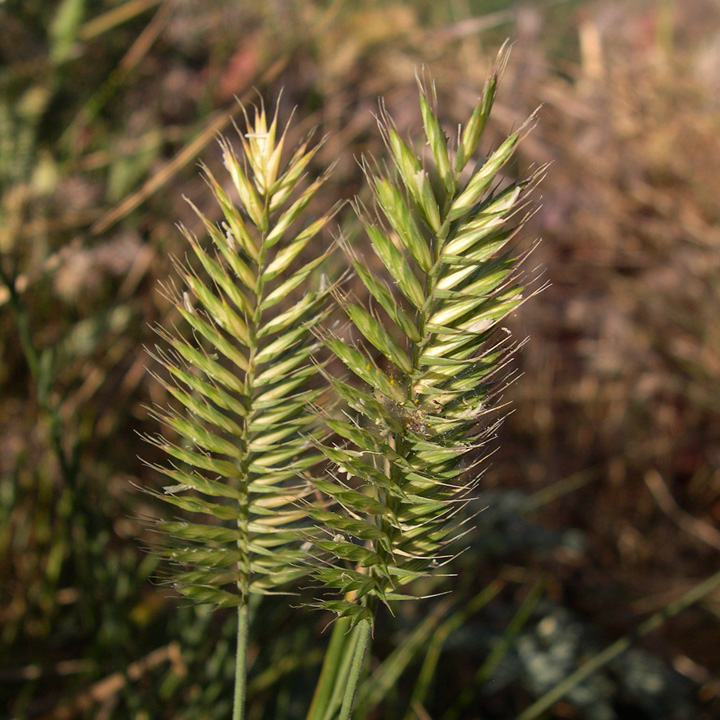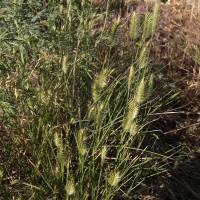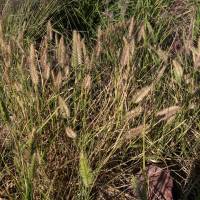FNA 2007, Utah Flora 1983, Field Guide to Forest & Mt. Plants of N Ariz 2009
Common Name: desert wheatgrass Duration: Perennial Nativity: Non-Native Lifeform: Graminoid General: Introduced perennial, densely tufted, stems 25-110 cm tall, with spikes to 10 cm long consisting of 2-ranked overlapping spikelets. Vegetative: Sometimes rhizomatous, stems 25-110 cm tall, often more than 40 cm tall, usually nearly equal in height,erect; blades flat, 5-20 cm long, 2-6 mm wide, glabrous or pubescent; ligules <2 mm long, membranous, sheaths glabrous, but lower ones can be hairy. Inflorescence: Spikes 1-10 cm long, 5-25 mm wide, lanceolate or ovate, with 2-ranked, closely overlapping spikelets, 7-16 mm long, spikelets with 3-6 florets, glumes 3-6 mm long, 3-veined, glabrous or with hairs on the keels, usually awned, awns 1-3 mm long, lemmas 5-9 mm long, glabrous or with hairs, with acute and usually awned apices, awns 1-6 mm, anthers 3-5 mm. Ecology: Found on dry range lands and disturbed soils, is shade and drought tolerant, grows early in the season, then becomes dormant and will resume growth in the fall if there is sufficient moisture; grows at an elevation of 1500-3700 m (5000-9000 ft); flowers Distribution: Throughout the western and northern United States. Notes: Is easy to establish so has been widely used throughout the West to restore productivity in overgrazed, disturbed, or burned areas. However, since it is very long-lived, persisting for decades, it may interfere with establishment of both native and non-native species. Is highly palatable to livestock, particularly during the spring. Is native to Europe, the eastern Mediterranian, Mongolia, and China. It is differentiated from A. fragile by having awned lemmas and having spikelets diverging from the rachises at 30-95 degree angles, while A. fragile have unawned lemmas, and spikelets diverging at angles of less than 30 degrees. Also, it differs from A. cristatum by having spikelets that are strongly ascending (vs. ultimately diverging from the rachis at wide angles), stems are often more than than 40 cm tall and are uniform in height (vs. less than 40 cm tall and of variable heights), and are straight, not bent. Ethnobotany: Unknown Etymology: Agro is from Greek agros for field, and pyron is from Greek puros, wheat. Desertorum refers to the plant's desert-like habitat. Synonyms: Agropyron cristatum ssp. desertorum, Agropyron cristatum var. desertorum Editor: Lkearsley, 2012



